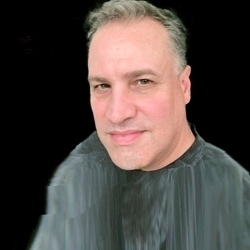"Most people know this feeling instinctively. When anything–a brand, a rock band, a style of clothing–becomes popular with a huge mass market, the cool people increasingly find it uncool, and look for something new." ... Kevin Maney
In his new book, "Trade-Off: Why Some Things Catch On, and Others Don't," author Kevin Maney makes the argument: "We constantly, in our everyday lives, make trade-offs between fidelity and convenience." Recapping the book in a recent article for Fortune and CNN Money.com, Maney discusses: "How Starbucks lost its 'fidelity'".
The author explains how trade-offs between fidelity and convenience lead brands astray and often, to their demise. And he uses Starbucks to illustrate his points. Bear with me. There is a point to outlining the Starbucks story yet again.
Maney defines "fidelity as the total experience of something." "Convenience is how easy it is to get what you want." He goes on to explain how Starbucks, when purchased by former and current CEO Howard Schultz in 1987, sought to emulate the Italian coffee-bar experience, to form a unique culture around the brand.
Obviously, Schultz succeeded–probably beyond his wildest dreams. By giving customers the choice of customizing their own caffeinated beverages and offering exotic coffee blends, customers found the experience cool, new and exciting.
Standing in line for an expensive, hand-crafted drink, full of exotic aromas, and made by expertly trained baristas was no problem. In fact, it was part of the experience. By making Starbucks "the third place"–not home, not office–but an oasis in life, the experience became rooted with a strong emotional pull. Starbucks had become a "cultural touchstone."
Of course this bit of luxury cost money. A few store locations kept the Starbucks brand cool and "exclusive" in feeling; customers had to sometimes go out of their way to get their desired coffee fix and experience. But hey–that's what made it so special, right?
Then, the big misstep happened. Schultz thought: why not open Starbucks stores everywhere? Why not saturate markets large and small? Won't that make access to the experience much more convenient for consumers? Won't we make much more money? But, by having Starbucks stores pop up everywhere, where was the exclusivity factor? Where was the cool factor? Gone.
As Maney points out, if consumers wanted convenience, why not pop into Dunkin Donuts or 7-Eleven, and save a few bucks while they were at it? Maney: "People looking for aura and identity turned back to smaller chains or independent local coffee shops." Exactly.
By February 2007, Schultz wrote to CEO Jim Donald about "the watering down of the Starbucks experience" and the "commoditization of our brand." In January 2008, Schultz took the helm of the company again. Since then, baristas have been trained and retrained, outlets closed and attempts made to recapture the aura of the brand. But there's no doubt: the brand is still ailing. Can Starbucks recapture its former brand magic? Unlikely.
Questions:
- Do you think it's possible for brands to deliver great experiences and convenience at the same time?
- If so, which brands exemplify both core values?
- Do you think it's possible for a brand that starts out as delivering great experiences or convenience, can adopt the other and still remain strong? Or do you think straddling both inevitably leads to a watering down of the brand and eventual failure?
- Which brands, if any, have done this successfully?
I'd love to hear from you.




